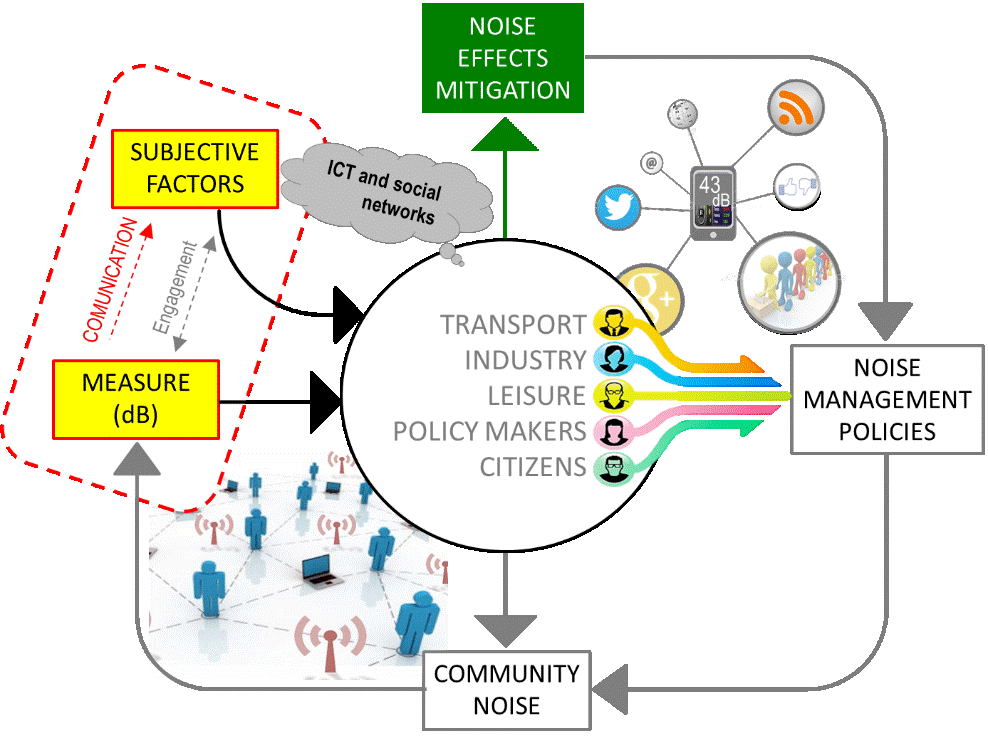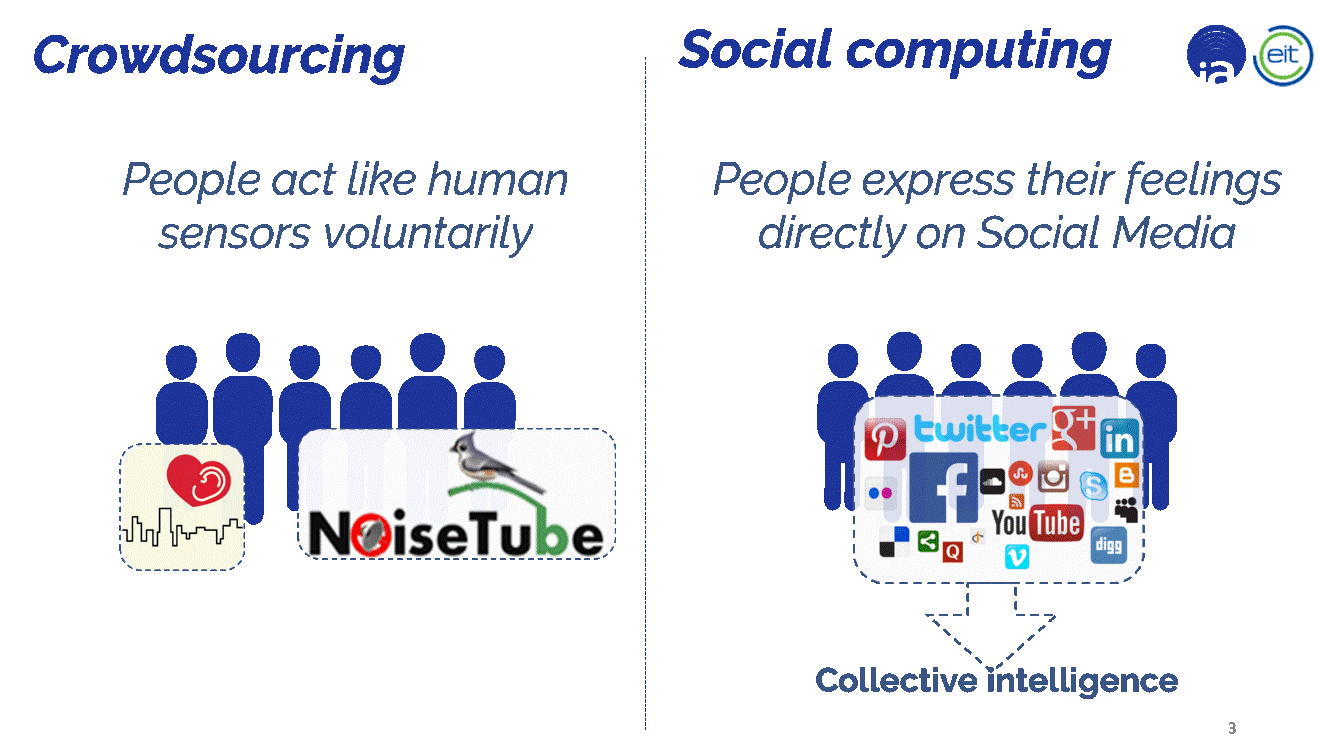Policy Making 3.0 in Noise Management
By César Asensio[*]
Editor’s Note: The world is rapidly changing due to ever-evolving digital technologies. We do not know what lies ahead, and it is possible that the future may contain connections between events and trends that no one expects. To prepare for this, and to experiment with forward-looking, participatory, and evidence-based policy-making practices, the Directorate General for Communications Networks, Content and Technology (DG CONNECT) launched the foresight project “Digital Futures.” Digital Futures prototyped a new policy-making model, Policy Making 3.0, based on the metaphor of a “collective brain,” or emerging collective intelligence.
Introduction
Policy Making 3.0 was defined as a participatory and evidence-based model that must respond to specific challenges.[1,2] It is based on the metaphor of the “collective mind,” and according to it, the legislator and the other stakeholders form a social network to jointly design policies based on two different aspects: (1) Scientific evidence, basically obtained from real-world data (measurements, statistics, models, objective data); (2) The resulting vision of collective aspiration, which is measurable through social networks (emotions, sensations, subjective perception). Policy Making 3.0 is a cyclical and continuous process, whose objective is the definition and continuous adjustment of “joint policies.” These policies will have an impact on the real world (individuals, society, economy, environment, etc.), which must be monitored to obtain scientific evidence on which to support the process. Through data mining and statistical tools applied to measurements and other objective data, we will identify trends and challenges. However, this scientific evidence is not enough. Along with the objective data, it is necessary to gather information referring to personal opinions, corporate interests, and pressure groups. These factors draw to the collective’s future aspirations, and therefore will have a great influence on the redesign of the policies. We will collect this entire “non-measurable” component through the social networks.
Policy 3.0 and Noise Management
In relation to our studies on non-acoustic factors influencing noise annoyance, the Instrumentation and Applied Acoustics Research Group (I2A2) of the Technical University of Madrid (UPM) proposed in 2015 a theoretical adaptation of the Policy Making 3.0 scheme to noise management.[3]

The main goal in this approach is the mitigation of noise effects on community, beyond the noise reduction. This goal will benefit residents’ health and well-being, and it will ease the expansion of transport, economic growth, and job creation deriving from the avoidance of the environmental constraints related to noise. All the stakeholders will benefit if the main objective is achieved. Furthermore, if the stakeholders work together to conform noise policies, and get involved in the solution, there are more certain possibilities to effectively mitigate noise. To achieve this, it is necessary to raise noise awareness among all the stakeholders. It is mandatory to build an honest relation among them, which is based on transparency and recognition of concern.

The implementation of this model is certainly difficult, but even if it was never implemented, it has several elements that have the potential to be exploited by noise managers in a near future for the mitigation of noise effects on communities:
- Noise monitoring. This element has been traditionally implemented through noise monitoring networks, but nowadays, there is a number of initiatives trying to implement low-cost sensor networks, which claim to accomplish bigger granularity in wider regions. These sensors have achieved a reasonable accuracy and precision, but they probably need a specific and adjusted level of standardization to achieve trustworthiness.
- Improved noise reporting. Bringing information closer to non-experts is crucial to building trust, as non-transparent metrics and over-technical reports may influence the adverse response from community. In addition, noise awareness and recognition of concern are closely related to this issue. Matching community expectations is still a challenge that needs further research.[4,5]
- Participation of stakeholders. The irruption of ICTs and social media offers novel decision-making opportunities in many different fields. Social networks allow giving voice to all citizens, and extending their audience, which facilitates their organization in groups, expanding the possibilities of generating opinion and debate at different scales (local to international). Their high potential allows us to foresee that, in a near future, these same tools will be used to strengthen citizen participation in decision making, through its direct application to the realization of consultations or referendums (e-Democracy tools). Nowadays there is still a long way to go. There have been some previous initiatives trying to recruit volunteers to gather their subjective response through the social networks (human sensors). Nevertheless, the involvement of participants is not easy when requested. On the other hand, ordinary people are willing to use their social networks to express their feelings and opinions on many different topics, including noise. Conveniently exploited, this passive information provided by participants through Twitter, Facebook, blogs, or online comments will conform the community response to noise. This is live information that can be gathered almost in real time, and analyzed in relation to specific events, actions, policies, sources, regions, and communications.[6,7]
At present, although participatory approaches are gaining more attention, the lack of scientific evidence about their effectiveness and benefits is an impediment to a wider support and funding by authorities and stakeholders, but it is a challenge that our research group is willing to face during the next years with two active theses on the matter.

References
[1] Policy Making 3.0. http://ec.europa.eu/digital-agenda/en/policy-making-30-0
[2] Accordino. “The Futurium—a Foresight Platform for Evidence-Based and Participatory Policy Making,” Philosphy & Technology (2013).
[3] Asensio, G. de Arcas, J. M. López, I. Pavón, and L. Gascó. “Awareness: A Parallel Approach Against Noise,” in the 22nd International Congress on Sound and Vibration—ICSV22 (2015), invited paper.
[4] Asensio, L. Gasco, and G. de Arcas. “A Review of Non-Acoustic Measures to Handle Community Response to Noise around Airports,” Current Pollution Reports (2017), https://link.springer.com/article/10.1007/s40726-017-0060-x.
[5] Gasco, C. Asensio, and G. de Arcas. “Communicating Airport Noise Emission Data to the General Public,” Science of the Total Environment 586 (May 2017): 836–848, http://dx.doi.org/10.1016/j.scitotenv.2017.02.063.
[6] Gasco, C. Asensio and G. de Arcas. “Towards the Assessment of Community Response to Noise through Social Media,” in INTER-NOISE 2017—the 46th International Congress and Exposition on Noise Control Engineering (2017), invited paper.
[7] Villazón, C. Asensio, and I. Pavón. “Design and Validation of a Simulator Tool Useful for Designers and Policy Makers in Urban Sound Planning,” Acoustics Australia (2017).
[*] Affiliation: Instrumentation and Applied Acoustics Research Group (I2A2, Universidad Politécnica de Madrid); Address: I2A2, Edif. Topografía – Ctra. Valencia km 7 – 28031 Madrid.


